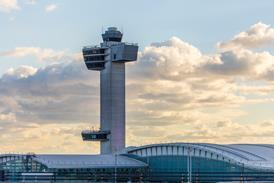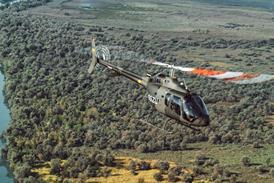The UK Ministry of Defence’s ongoing logistics transformation process has led to its signature of through-life partnering deals with industry to support operations of multiple aircraft types, ranging from fighters and transports to battlefield helicopters.
One of the newest examples of such co-operation is the Hercules Integrated Operational Support (HIOS) programme, which will maintain the Royal Air Force’s Lockheed Martin C-130 tactical transports until their planned retirement in 2030.
 |
|---|
© APG Photography/AirSpace |
Awarded to prime contractor Marshall Aerospace in May 2006, the £1.5 billion ($2.98 billion) deal is already reaping benefits, according to its industry partners, which began delivering services under an accelerated availability-based model last October.
Also involving airframe manufacturer Lockheed and engine supplier Rolls-Royce, the HIOS framework currently covers the RAF’s 20 C-130Ks, operations of which started in 1966, and its 24 new-generation C-130Js, in use since the late 1990s.
 |
|---|
© Marshall Aerospace |
Forced to fly on because of the delayed launch of the replacement Airbus Military A400M programme, the C-130K fleet will this year be slimmed down to 15 airframes, with five stretched-fuselage aircraft to be retired after being deemed uneconomic to remain in service. However, with demand to keep the remainder available to the frontline as long as possible, the Ks are now receiving fresh modifications that will enable them to soldier on until at least 2010, and for around 10 airframes, possibly until 2013.
Extending what was already a 40-year relationship with Lockheed and the UK Ministry of Defence, HIOS replaces a previous multitude of small-value and short-length contracts on the C-130K, says John Sneller, head of maintenance, repair and overhaul specialist Marshall’s RAF C-130 business unit.
Originally providing incentives for meeting operational requirements at the RAF’s Hercules main operating base at Lyneham in Wiltshire, the HIOS project “was a sea-change in how we behaved to each other, and in terms of how we looked after the aircraft”, says Sneller. However, the greatly increased use of the C-130J in Afghanistan and Iraq since the deal was signed has seen the emphasis shift to delivering operationally fit aircraft to provide the backbone for the RAF’s intra-theatre transport activities in both countries.
With the UK’s C-130s logging around 35,000 flight hours every year, around one million maintenance hours will be required to reach the 2030 milestone, according to Marshall.
So-called depth maintenance of the Hercules represents the largest activity at the company’s Cambridge airport site, with HIOS activities accounting for around 75% of its work on the UK fleet. Much of the remainder of the work is conducted in support of urgent operational requirements, which currently include refurbishing outer wings for short-fuselage C-130Ks, integrating defensive aids equipment and explosion suppressant foam, and adding fuselage tape protection to guard against damage caused by debris on rough landing strips (C-130J pictured below landing at Camp Bastion).
 |
|---|
© Crown Copyright |
Work under the HIOS deal is split into four streams: aircraft maintenance, technical support, supply chain management and propulsion system management. “HIOS is very inclusive; there are virtually no dependencies on third parties,” says Sneller, who adds: “Simplicity is a real boon here.”
Marshall and Lockheed respectively serve as design authorities for the K and J models, while engine maintenance and overhaul is managed by R-R, which directly supports the newer aircraft’s AE2100s, but subcontracts work on the K’s T56 engines to Sigma Aerospace in Croydon, Surrey.
Sneller says the HIOS deal has created a “musketeer’s mantra” between the industry and MoD partners, and has accelerated the sharing of intellectual property on the C-130J. Lockheed has six personnel based at the Cambridge site, with these working alongside R-R employees and over 30 staff from the UK Defence Equipment & Support organisation’s Hercules integrated project team. “That co-location helps day-to-day,” says Sneller, who notes: “Previously, some of these relationships were fairly adversarial.”
The programme’s key metric is delivering fit for purpose (FFP) aircraft to the frontline, with a so-called “sentencing” process performed at Lyneham every other day. Aircraft are declared green if they are fit for use, blue if in they are maintenance or red if unavailable for technical reasons, with negative sentencing placed on one of the partners. “Bearing down on non-FFP days is critical to the programme,” says Sneller.
“In financial terms, it is about collective support. If Rolls-Royce, or Lockheed, or Marshall are not succeeding, it’s in the interests of the other two partners to say: ‘what’s going on here, how can we help’? Otherwise all partners will be dragged down.”
Managing the supply chain is one of the toughest challenges facing the HIOS team, according to Sneller. But while some companies have had their previously direct access to the IPT complicated by the new team structure, he says: “Because we have a long-term contract, incentives that we have can be flowed down,” empowering lower-tier companies to meet performance goals.
Around 500 people work on the HIOS scheme in the UK, with this total including a forward maintenance team of around 30 technicians at Lyneham. “Collectively, that’s a very visible part of HIOS being on the station working with the forward-support folk all the time,” says Sneller.
The contract was intended to have an 18-month transition phase, but went to an availability-based model three months early. “We were confident in terms of the structure, personalities and framework to get on with this, and we are going well,” says Sneller. “The contract is occasionally pulled out, but it’s very much about the relationship and how we work together. It’s much more practical than it used to be.”
Around 10 UOR programmes are conducted each year, with this work increasingly being performed under a combined maintenance and upgrade process at the Cambridge site, which provides hangar space for up to 12 Hercules. “As a maintenance-based contract there are opportunities to roll a lot of these UOR-type activities into the framework of HIOS,” says Sneller.
Marshall also works on C-130s for Austria, Belgium, Denmark, the Netherlands and Sweden, and Sneller says: “We are looking at what we can bring from HIOS to our overseas customers.” The company – which is also currently eyeing an integrated operational support contract on the RAF’s fleet of nine Lockheed Tri-Star tankers and transports – is also interested in gaining work to support the UK’s 25 A400Ms from early next decade.
“We are delivering a successful integrated availability model on the Hercules, and making genuine improvements. Instead of having spikes of drama and sudden in-year funding issues, there is a much more stable financial climate: not only for the MoD, but the industry arena as well,” says Sneller. “We have undoubtedly made and shared savings. Before partnering, that level of change just couldn’t have been imagined, and those benefits couldn’t have been realised.”
Source: Flight International























